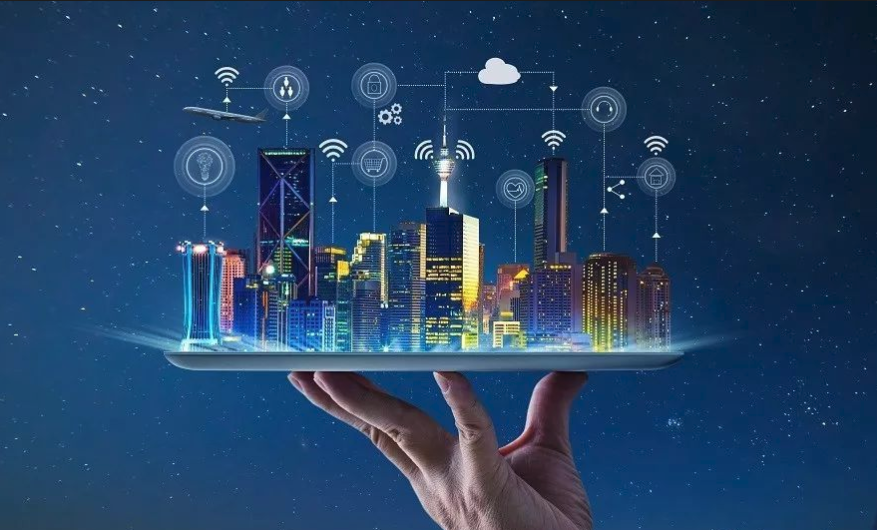
Digital economy is irreversible
Babolat – french tennis racket maker, has produced a smart racket that captures user performance data that can be sold to other sports companies, sports research centers, and even sports betting companies that are trying to develop new products; there is a car sensor that driver brake data upload, if many drivers frequently brake in the same place, then there is a hidden danger in the traffic section here, the insurance company can cooperate with the municipality in advance to eliminate hidden dangers to reduce the payment.
Whether you recognize or accept it, the data economy is unstoppable.
How much data will be generated in the future? In the past few years, the amount of data worldwide has grown at a rate of nearly 60% per year. It is said that the current global data generated every day has reached about 2.5 exabytes, which means that 90% of the world’s data has been generated in the past two years. By 2020, the total amount of global data will exceed 40ZB (equivalent to 4 trillion GB), which is 22 times the total amount of data in 2011.
With the gradual commercialization of 5G, artificial intelligence (AI) and Internet of Things (IoT), the data sources of the existing Internet economy will expand exponentially, and all aspects of life, various industries, and various types of sensors will bring more There are N times larger data, and the economic value that can be infinitely excavated.
Who can carry the data economy?
This is a typical infrastructure issue. Whether it is a bee nesting or a human being, the infrastructure is a necessary condition for the orderly development of all activities. From the Petra ruins that gave birth to the ancient Arab kingdom to the Internet, which now carries the global digital economy of nearly 13 trillion US dollars, it can be seen that infrastructure is a necessary prerequisite for supporting economic activities, and the re-engineering of infrastructure means new The beginning of a round of economic and even social change.
Infrastructure has a butterfly effect. Today’s economic changes, especially in the digital world, are no longer dependent on disruptive changes in infrastructure. Often small changes can cause huge changes: this is from Motorola and Nokia in 4G. After the arrival of the times, it quickly went down, and even the chances of summing up the last words were not obvious. On the infrastructure, there is a chain reaction of nuclear fission. A mobile payment can connect several life scenes to form a super-app; the infrastructure is ecological. Once a new infrastructure emerges, it will involve multiple parties and even a new economy. Or social role.
5G is the beginning of the next round of digital technology economic infrastructure changes. Qi Hezhen, an academician of the Chinese Academy of Engineering and chairman of the China Internet Association, said, “When the 5G is born, its arrival will lead to an unimaginable format.” 5G will increase the connection capacity by 2,000 times on the basis of 4G. This single point of change will lead to a new economy of online HD video, Internet of Things, smart city, industrial Internet and so on.
With the rise of the data economy, we have seen that the data economic infrastructure consisting of 5G, artificial intelligence, edge computing, and blockchain is gradually being built. 5G provides ubiquitous connectivity for humans, objects, and machines, and it already constitutes the hardware infrastructure; artificial intelligence, cloud computing, fog computing, and even edge computing constitute the computing infrastructure; it can carry data values, encoded data. The blockchain of production relations and governance rules is the infrastructure for data value/value data interconnection and will have to rely on blockchains.
The data infrastructure is inseparable from the blockchain.
In the various performances of the digital currency, and the screaming of the black smoke, the blockchain was demonized. If there is not much understanding of the blockchain technology itself, there is no comparative experience across the currency circle and the chain circle, and most of the information reception for the blockchain comes from the instant media. Frankly speaking, it is difficult to form a blockchain. “Objective” attitude. From the perspective of data economy, it may not be so important about how the cryptocurrency market develops or when the popular DApp arrives under the “support” of the blockchain; why and how the blockchain and 5G, labor Smart, edge computing and other technologies to build a data economy infrastructure is the real thing that needs to be taken.
Why is the blockchain an integral part of the data economy infrastructure? Li Xiaojia, president of the Hong Kong Stock Exchange, said at the IT Summit in March this year: In the 5G era, more and more data will become bulk commodities and raw materials, and the traceability, evidence, standards, and data of the data The establishment of rights, pricing, and credit systems will have to be solved with technologies such as blockchains.
·Data Determination Artificial intelligence and edge computing Regardless of how intelligent the algorithm is, the premise of its utility and value depends on the quality of the data being processed. The existing artificial intelligence and edge computing, similar to the characters in the movie Pirates of Dreams space, face the massive data, it is difficult to identify whether they are in reality or in the dream – that is, the authenticity and validity of the data. In such a case, it is necessary to rely on the blockchain to provide context for the data itself, trace the source, and then judge the usability of the data, and then process it by calculation and algorithm to generate the value of the processed data.
· The right to determine the data After determining the data itself, you need to determine the ownership of the data. For the time being, the ownership of the data is completely in the form of a slave society. The centralized technology company unconditionally “enslaves” and “sells” the user’s data with its products, making it impossible for data producers to share the value of the data. dividend. Data privatization is the key to stimulating the economic potential of data. Blockchain is the most effective way to enforce data by translating data.
·Data Collaboration In the future of Internet of Everyone, Everything is Connected, and People and Things Connected, a huge production network will be formed between data and data. In some scenarios, in order to solve some specific problems, or involve the centralized processing of data, and the transfer of computing power. Under such circumstances, there is a need to form a cooperative relationship between data, that is, a production relationship between data, and a blockchain is currently the best technique for coding production relations using technology.
There is still a parallel between the blockchain and the data economy infrastructure.
From SaaS (software as aservice) to PaaS (Platform as a service), to the current IaaS (Infrastructure as a service), technology giants, financial institutions and top strategic consulting companies are grabbing infrastructure highlands, especially blocks. Chain infrastructure service platform: Microsoft launched Azure, Intel launched Sawtooth Lake, IBM launched Hyper ledger Fabric, and financial giant invested R3 to launch Corda. However, as far as the application development of the blockchain is concerned, blockchain technology does not seem to have Ready, at least not Ready can trigger a new round of digital economy.
Judging from the improvement of the traditional blockchain in the past, there has not been any solution that can effectively solve the above fatal problems. Past improvement measures are limited to the serial data structure of the blockchain, and the scalability and interconnectivity are extremely limited; or the data structure characteristics of the blockchain are destroyed, and the scalability is improved, but the block is seriously damaged. The decentralization and security of the chain cannot make the blockchain an infrastructure that can be infinitely expanded, barrier-free, highly stable and then low-energy, carrying data value exchange and the next-generation digital economy.
Shi Xingguo, the head of the Chinese Internet veteran and former Red Flag Linux operating system, saw the potential of the digital economy four years ago, but also deeply recognized the inadequacy of the existing data infrastructure. He then set up a super-block chain team and began to study the parallel blockchain direction. He found that after upgrading the blockchain from the original one-dimensional serial structure to the two-dimensional parallel structure, many “classic” problems were taken for granted. Solution.
The scalability problem of the serial chain can be solved by the dynamic fragmentation of the sub-chain in the parallel chain and the infinite increase of the number of sub-chains. The closedness of the serial chain can be broken through the natural cross-chain interconnection scheme in the parallel environment. The chain has serious limitations in its business, and in the parallel chain, it can accommodate multiple businesses and assets to ensure ecological diversity. Parallel chains can allow any node to join like Bitcoin, or extend the scope of business like Ethereum, which joins smart contracts. It breaks through the parallel chain of performance and cross-chain interconnections and can efficiently support countless “bitcoins”. And “Ethereum” and so on, thus truly become the infrastructure supporting the digital economy of the 5G era.
After four years of research, Shi Xingguo and the Super Block Chain team have obtained the world’s first batch of parallel blockchain related patents. As an infrastructure, the ultra-blockchain parallel blockchain technology is now completely open source, and has launched Paralism, an application ecosystem platform based on its parallel blockchain, which can be used by industry, enterprises and individual users to deploy applications, develop business and build ecology. ——When the 5G arrives and the Internet starts again, leverage the blockchain, especially the parallel blockchain, to develop the blue ocean of the digital economy and build a new future for data value.
Scan and join us !

